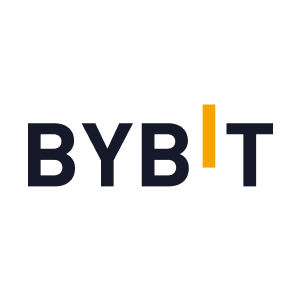Waves WAVES
Report IssueSentiment Neutral
Fundraising Statistics
$0.96 +1.05%
$0.188
 WAVESWaves
WAVESWaves
 USDCUSD Coin
USDCUSD Coin
Short Review Waves
Crypto project Waves (WAVES) is classified as a Blockchain. Waves is a Utility token that is hosted on the Waves Network. The current total supply is 100.00 M WAVES (Circulating Supply + Tokens yet to be released - Burned Tokens). A total of 85.00 M WAVES (85.00% of total tokens) have been allocated for the public sale. The level of social activity of the Waves project is assessed as Medium.
Waves ICO Overview
Estimated date for the public token sale: 30 May 2016. Waves (WAVES) price during the token sale: 0.188 USD.
WAVES Price Chart
The launch of WAVES token trading took place on 2 June 2016.
Fundraising Rounds
Total sold 85.00 M WAVES tokens ( of total tokens). Total amount of funds raised by the Waves project is $16.00 M.
| Investment Round | Date | Price | Funds Raised |
| Crowdloan | April 2016 | $0.188 | $16.00 M |
Waves Investors
Detailed review of WAVES
Waves Technologies is a comprehensive ecosystem of innovative blockchain -solutions and products with a special focus on cross-chain decentralized finance (InDeFi). Waves Technologies leverages three powerful blockchain protocols: Waves, Neutrino and Gravity, providing a developer-friendly infrastructure to build cutting-edge products with significant potential for mass adoption. By creating the InDeFi paradigm, Waves Tech aims to connect all existing blockchains, solving the problem of fragmentation and providing unlimited opportunities to create applications available across all chains. This, in turn, aims to revolutionize the financial sector by bringing transparency, reliability and efficiency.
Waves attempts to solve the core problems of the crypto industry by providing everything that the crypto and developer community might need to promote mass adoption and widespread adoption of blockchain-based solutions. The Waves ecosystem includes a plug-and-play development infrastructure with tools, services and libraries, as well as various dApps and DeFi products based on the unique features of the three main protocols. This combination makes the ecosystem comprehensive and suitable for solving various types of problems.
Waves Protocol The Waves protocol offers a developer-friendly infrastructure, including SDK (Ride + IDE + Keeper); smart assets; and a cost-effective and resilient LPoS algorithm with improved network security through the Waves-NG network protocol, which solves the speed and throughput issues inherent in blockchains.
GravityGravity is a blockchain-agnostic protocol for cross-chain communication and data oracles. By bypassing the need for a dedicated token and blockchain, Gravity creates a strong foundation for building gateways and stand-alone cross-chain applications and provides a solution to scaling issues with sidechains.
Neutrino's multi-purpose protocol, Neutrino enables the tokenization of real-world autonomous assets through collateralized debt positions (CDPs), algorithmically maintaining economic stability and synthetic asset parity. The first synthetic asset released on Neutrino was a US dollar-pegged token, USD Neutrino (USDN), created using Ride, Waves' dApp-focused smart contract language.
The Waves Project (WAVES)
The Waves project was founded in March 2016 by Alexander Ivanov. Alexander became interested in blockchain technology after the release of the very first cryptocurrency. By that time, he was already developing software for payment systems. The Waves ecosystem brings together distributed teams located around the world developing three protocols, multiple applications and tools.
Also on the team are:
- Alexey Pupyshev (Waves Technologies evangelist, co-founder of the Neutrino protocol and the Gravity protocol) Alexey first began working in the crypto space in 2014, when he headed the algorithmic team HFT hedge fund, analyzing mining pools and developing liquidity models for one of the first crypto exchanges. Since 2018, Alexey has been an evangelist for Waves and other projects (Beam, Hedera, EOS). In 2019, his team began working closely with the Waves ecosystem, including an online programming course, the Neutrino stablecoin, and the Gravity protocol.
- Sten Laurissens (Strategic Advisor, Waves Association) An active supporter of Waves since its launch, Sten joined the Waves Association to offer strategic advice. He oversees the product roadmap, marketing strategies and community communications, as well as providing insight into Waves' infrastructure development. Laurissens has been involved in crypto since 2011 as a trader, investor and consultant. This experience gives him a unique perspective on crypto investment cycles and the workings of the blockchain industry.
- Inal Kardanov (Developer Advocate, Volny Association) Inal graduated from the Faculty of IT Systems of the State University of Management (Moscow) in 2015. As a software developer, manager and co-founder, he has worked on several products and startups in the edtech and financial technology industries. . In 2018, Inal joined Waves as a Developer Advocate and is responsible for building the developer community and helping third-party developers build their applications on the Waves blockchain.
- Vladimir Zhuravlev (Developer Advocate, Waves Association) Vladimir has a B.A. in business informatics from the Moscow Higher School of Economics and a graduate of the business and economic exchange program at the University of Berlin. Humboldt. He is a Python and JavaScript developer with interests in technology, blockchain, business administration, and linguistics. He has proven experience in programming, teaching, event management and public speaking. Vladimir is the co-author of Gravity and co-founder of Certificado.one.
Waves Advantages
- Ease of use. For a long time, Waves' core motto has been “blockchain for the people,” meaning that the products developed in the ecosystem are convenient for everyone. For example, all dApps are available without downloading, as customers can interact with the blockchain using Waves Signer on any device, including mobile phones. Users do not need to learn a programming language to create their own tokens. All they need to do is go to the official wallet, follow the simple instructions and select the appropriate settings. At the end they pay a fee to one of the Waves coins. This feature greatly simplifies the tokenization and ICO processes.
- Lower entry threshold. Waves offers a solution to the problem of high entry barriers for new crypto users. Users can conveniently deposit fiat currency, convert it to the USDN stablecoin, and then exchange it for any other DeFi asset or project token.
- A more powerful blockchain. The Waves network can handle more load and concurrent transactions than Ethereum. This was achieved through more advanced code.
- Own decentralized exchange. Waves has its own decentralized P2P cryptocurrency trading platform, Waves.Exchange. It makes it easy to store your cryptocurrency savings and also offers users many additional features such as DeFi staking, leverage trading, and DeFo transactions with fiat-pegged stablecoins.
Disadvantages of Waves
- Custom smart contracts. Waves uses a special smart contract language called Ride. Developers cannot use Solidity, Rust, or any other language to create web-based programs. This restriction was created to avoid gas and ensure fixed transaction fees since Ride is not a Turing complete language. Either way, Ride is pretty easy to learn and use, thanks to a variety of templates, instructions, and even a developer book. Thus, Ride is not an obstacle for dApps creators.
- High threshold for miners. To run a verification node in the Waves protocol, a user must deposit at least 1000 WAVES. This may be the reason why there are currently only 300 nodes running on the network. The good thing is that you can invest in WAVES miners while taking advantage of the LPoS consensus algorithm without starting a new node. WAVES owners can rent out any number of their tokens to node owners.


 ByBit
ByBit  Gate
Gate  Score
Score  Ethereum
Ethereum